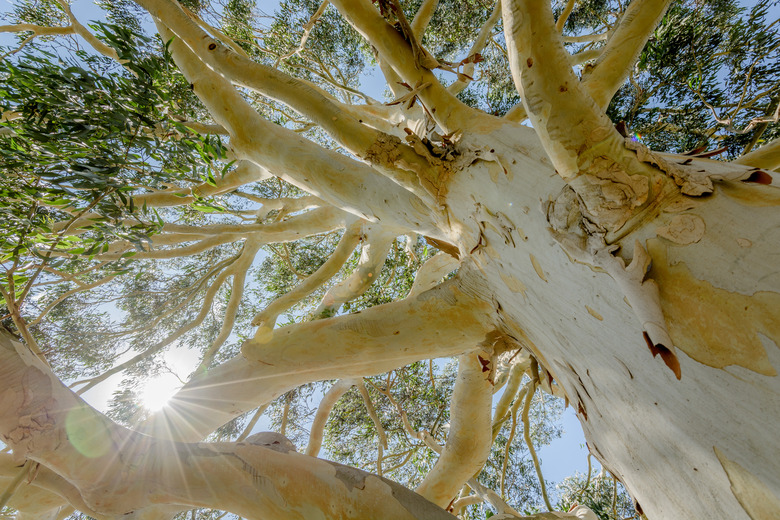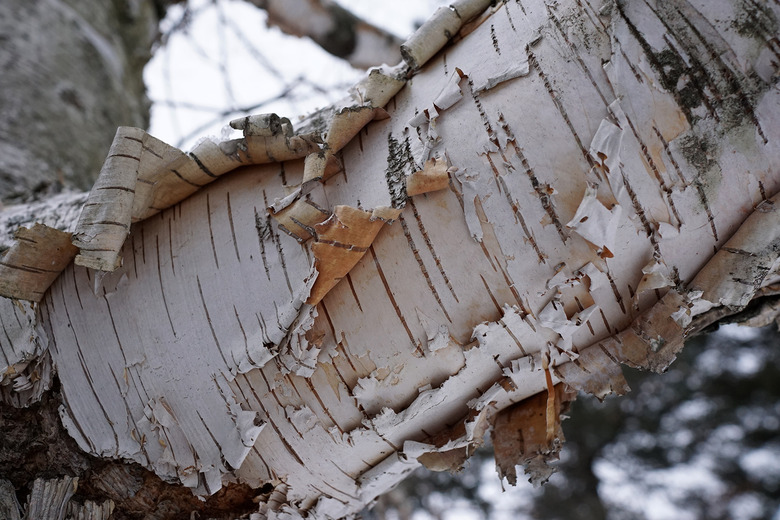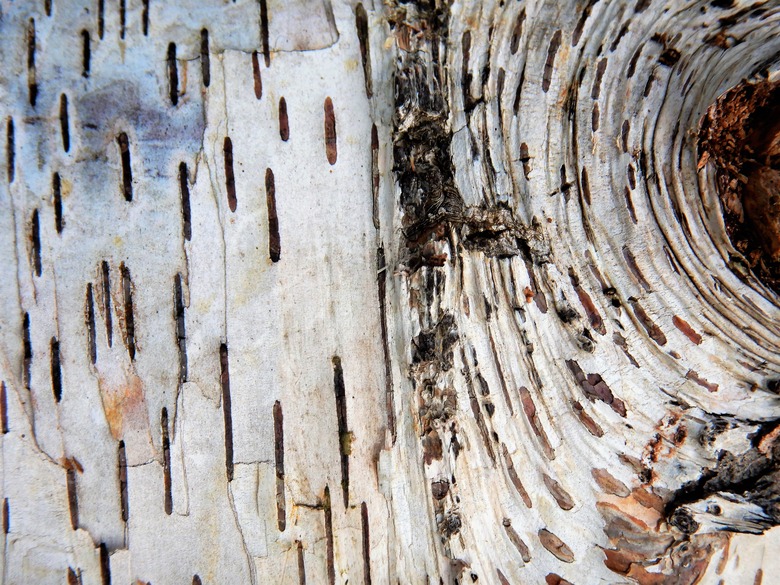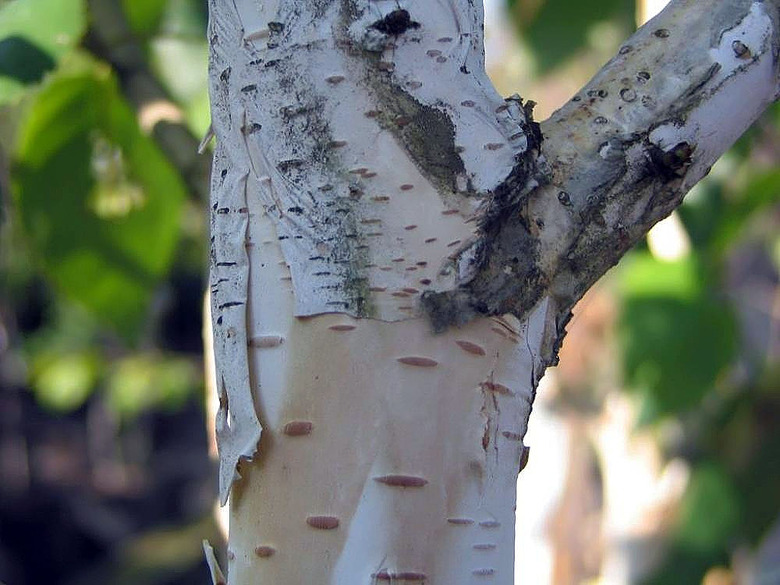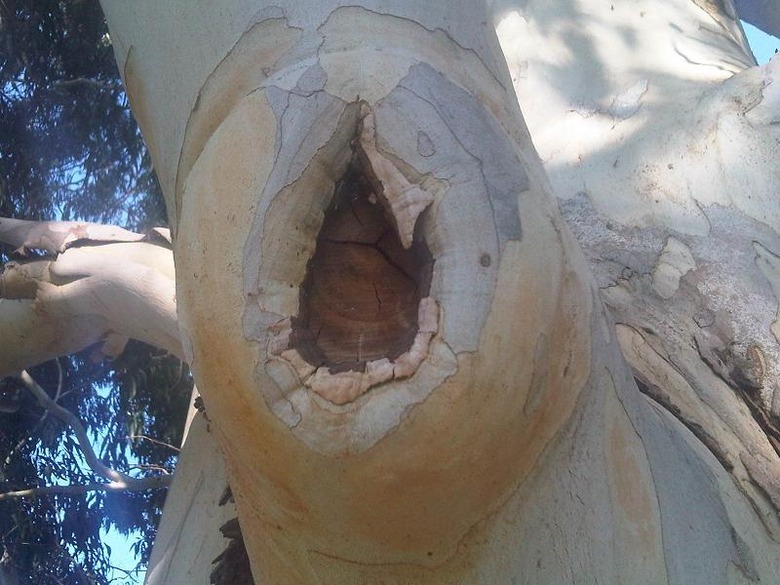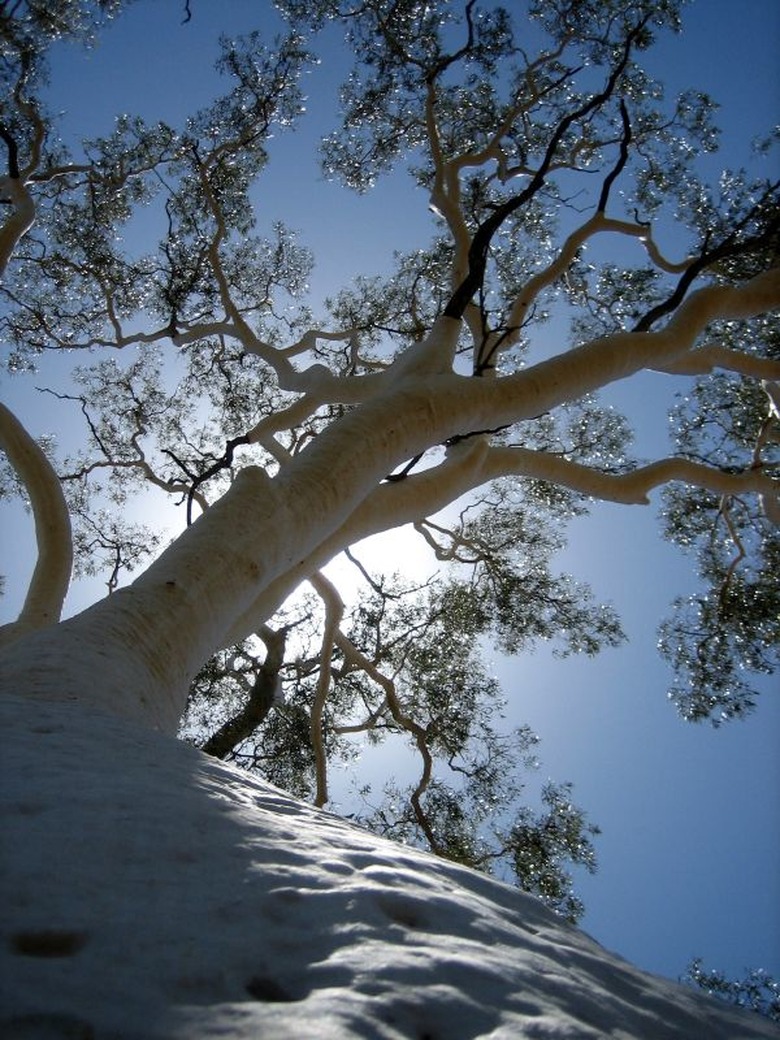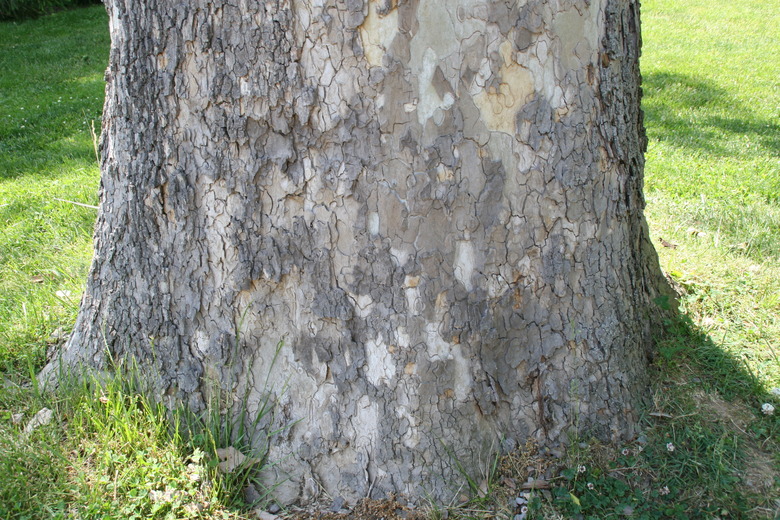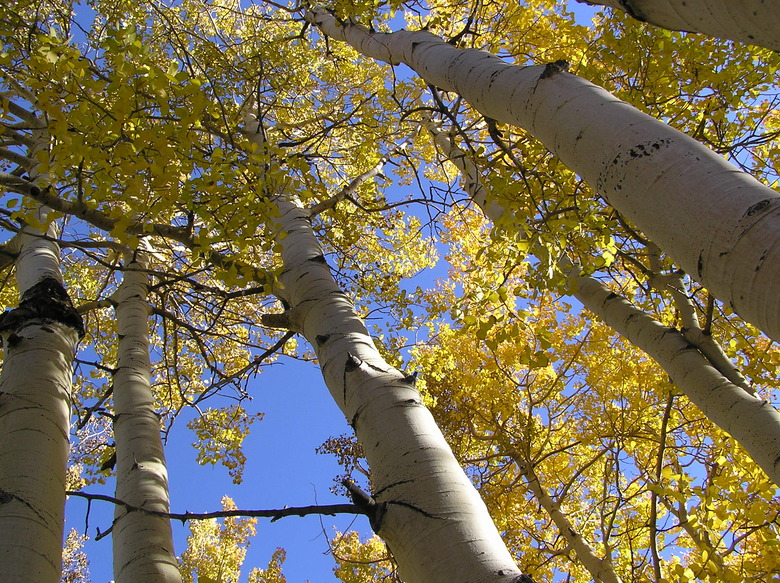What Kind Of Trees Have White Bark?
Various species of ornamental trees are prized for their white bark. On some of these trees, the bark peels. Other species develop their white trunks as mature trees.
You can find both deciduous and evergreen trees with white bark, though choosing which to grow will depend on the USDA hardiness zone in which you are gardening.
Tip
Birch trees are known for their peeling bark which is often white in color.
Birch Trees With White Bark
Birch trees (Betula spp.) are deciduous trees that often grow in wet soils and are known for their slender branches and paper-like, peeling bark. Many of these trees have creamy white bark. Let's look at a few examples of white birch trees.
Paper Birch
The paper birch (Betula papyrifera, zones 2 to 6), also known as the canoe birch, is native to North America. It is found primarily in cool northern climates with mild summers. It has heights between 50 and 70 feet.
This tree has white bark which peels back to reveal orange-brown bark below it. On mature trees, black markings appear on the white tree bark.
European White Birch
Europe and Asia are home to the European white pendula (Betula pendula, zones 2 to 6), which, like the paper birch, has white bark that peels.
This tree has drooping branches and is often used as an ornamental in North America. It has heights between 30 and 40 feet.
Whitebarked Himalayan Birch
Native to the western Himalayas, the whitebarked Himalayan birch (Betula utilis var. jacquemontii, zones 5 to 6) has whiter bark than the species Himalayan birch (Betula utilis, zones 5 to 8).
This medium-sized tree has typical heights between 30 and 40 feet and grows in a pyramidal shape.
Gum Trees With White Bark
Some types of gum trees in the genuses Eucalyptus and Corymbia, which are native to Australia, have white bark. Let's look at a few examples.
Mountain Gum
The mountain gum (Eucalyptus dalrympleana, zones 8 to 10) is a broadleaf evergreen tree native to southwestern Australia with a white trunk. It has heights of up to 70 feet. This flowering tree produces creamy white flowers in July and August.
Ghost Gum
The ghost gum (Corymbia papuana, zones 9 to 11) is another gum tree native to Australia. It has white, smooth bark that gives it a spectral appearance, hence its common name.
Other White Barked Trees
Let's go over some other types of trees known for their white bark.
American Sycamore
One of the defining features of the American sycamore (Platanus occidentalis, zones 4 to 9) is its brown bark, which peels back in irregular segments to reveal cream white bark underneath. American sycamore trees, which are native to eastern North America, are very large trees with heights of up to 100 feet.
Quaking Aspen
The quaking aspen (Populus tremuloides, zones 1 to 6), also known as American aspen or trembling aspen, is another native tree known for its white bark. Young trees have whitish green bark that turns whiter as the tree matures, and exhibits dark patches.
The quaking aspen, which gets its common name from the way its dark green leaves shake in the breeze, has a wide distribution that spans most of North America and grows in both rocky soils at high alpine elevations and sandy soils closer to sea level.
References
- Missouri Botanical Garden: Betula papyrifera
- Missouri Botanical Garden: Betula pendula
- Missouri Botanical Garden: Platanus occidentalis
- Missouri Botanical Garden: Populus tremuloides
- Missouri Botanical Garden: Betula utilis var. jacquemontii
- Oregon State University: Landscape Plants – Betula utilis var. jacquemontii
- Missouri Botanical Garden: Eucalyptus dalrympleana
- Mountain States Wholesale Nursery: Eucalyptus paupana
- The University of Arizona Campus Arboretum: Corymbia papuana
